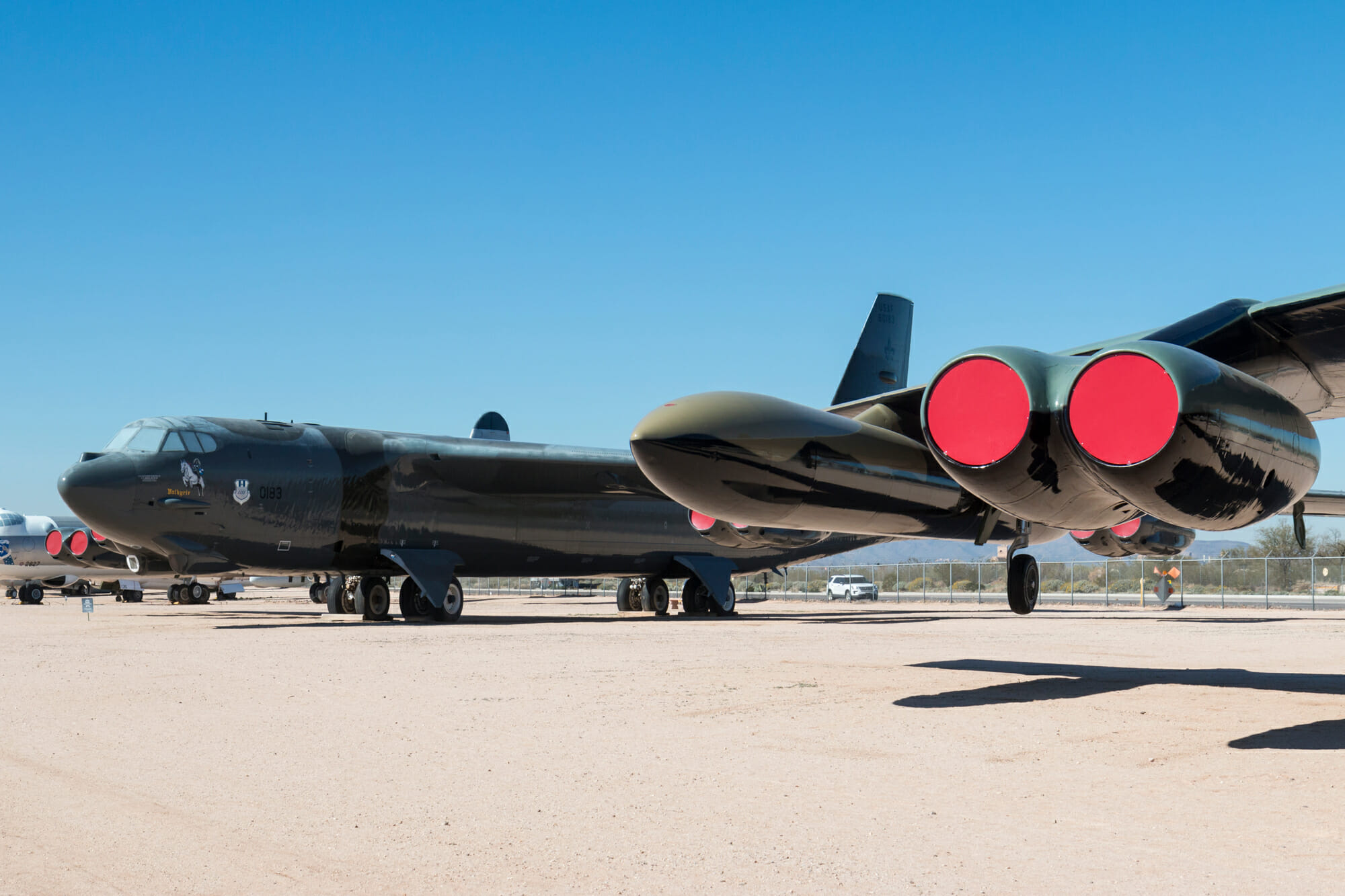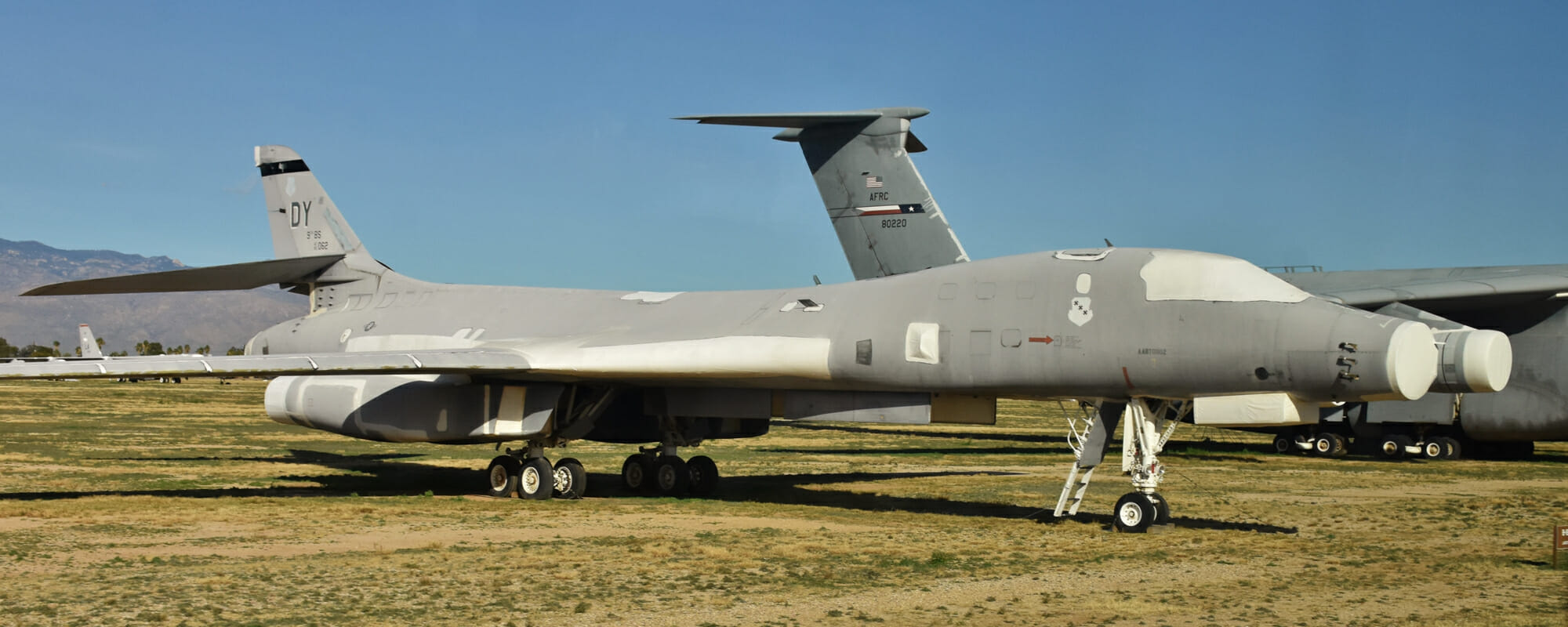
The sun was setting across Tucson, bright splashes of orange and gold tossed into the clouds. I’d not been to this city in years, and this was my first overnight at our new crew hotel, having switched from one side of the airport to the other. We rode in the hotel shuttle, quietly taking in the giant cacti that lined the horizon like silent soldiers on watch. Suddenly, as the shuttle rounded a bend, hundreds of airplanes appeared in front of us, the sunset casting monster-sized shadows our way. I gasped as we drove closer, realizing that the planes stretched for miles, that there were thousands of them just sitting there in the darkening desert. Watching the sky grow black, I was overwhelmed by an eerie feeling that these planes were alive, that at night they shuddered awake and plotted a machine-led takeover of humanity.
I leaned up to ask the driver what it was. “That’s The Boneyard. It’s like an airplane retirement home.” I laughed while he pointed out The Pima Air and Space Museum situated right next door, full of a variety of military and commercial aircraft from all over the world. The driver continued to regale me. “And you know, you can visit The Boneyard. You just gotta have a background check two weeks prior since it’s located on the Davis-Monthan Air Force Base.”
I had to go see these giants up-close. Once back home, I immediately began planning my trip, fascinated by the history and artistry of the museum and the airplanes, in love with the beauty of the Sonoran Desert.

Formally known as the 309th Aerospace Maintenance And Regeneration Group (AMARG), colloquially referred to as The Boneyard, was started after World War II as a “graveyard” for old military aircraft and has grown to become the largest airplane collection of its type worldwide. At its inception, B-29 Superfortresses were the primary “retirees,” with more than 600 sent to the graveyard, as well as 200 C-47 Skytrains. The incredibly low humidity and lack of rainfall in the Sonoran Desert make this an ideal location for machines made of metal. Today, over 4400 aircraft are stored at the facility, and upon their arrival, they are stripped of classified hardware and washed thoroughly to remove any weather-related impact from various locations. Fuel tanks are emptied and coated with an oil film, and then the entire plane is wrapped in “spraylat,” a white plastic compound that coats the metal and keeps the interior temperature within fifteen degrees of the outside. The aircraft are then towed to their resting place in the desert until they are called back into action or stripped down for parts and used to create new machines. Currently, the facility houses $34 billion in assets.
Once my background check cleared, I booked my ticket to The Boneyard. When arriving for a tour, tickets are picked up at the Pima Air and Space Museum, where there is also plenty of shaded, free parking. Bus tours are given twice daily on weekdays (federal holidays excluded) but no foot traffic is allowed. The buses are comfortable and spacious, and the tour guides are friendly and knowledgeable. Our fully-packed bus took a ten-minute drive to the Air Force Base. Most of the tourists were older, and aside from a lone veteran who sported his Air Force hat, I was the only other solo traveler. We listened to strict instructions about what parts of the tour could be photographed (all videography is prohibited) and upon arrival, we all had to disembark for yet another round of security and identification checks. The Davis-Monthan Air Force Base stretches for miles, and surprisingly, The Boneyard only takes up a small portion of the space despite its own sprawling expanse. The airplanes on display for our tour were lined up along a dusty dirt road bleached white by the constant sun. The airplanes displayed differ from tour to tour. As the guide told us the stories behind each one, the bus crawled to a stop so that we could take photos through the large windows.

Although I wasn’t able to see all the aircraft available to view in The Boneyard, I saw all manner of jets, helicopters, and military planes. The oldest, most intact aircraft at AMARG is the Martin B-57 Canberra, an American-built twinjet tactical bomber assembled in 1953. It is as large as two mansions put together, and is nicknamed the Vomit Comet by pilots who have allegedly emptied “thousands of gallons” of vomit into its interiors.
Two LC-130’s have been stored at The Boneyard, with pieces of one returning to Antarctica to serve the science stations there, and several of the planes on the tour were merely skeletons of once-larger pieces. The mechanics who run the facility sometimes create small “ghost planes” with chicken wire to symbolize what it would have looked like as a whole, including tiny ghost pilots attached to the wing as a funny nod to all those who once flew them.
Surprisingly, animals are a large nuisance in The Boneyard as it is affected by rattlesnakes, bobcats, honey bees, rabbits, and birds. The rattlesnakes are incredibly venomous and must be removed with great care once or twice a month. Bobcat kittens are often born in the bodies of the white-coated airplanes but the workers do not attempt to remove them. Rather, they must wait until the kittens are old enough to survive and leave of their own accord in order to maintain the safety of the species. It can take several weeks before those aircraft are able to be serviced, so there is a system in place to navigate the mating seasons accordingly. Still, birds are the absolute worst culprits for the planes because their feces is abundant and if not immediately cleaned, it can and will melt metal. Due to the warm climate, it is a constant struggle to maintain the aircraft.

As the dirt road rounded the bend, the rows of aircraft became more densely packed taking us past hundreds of identical planes lining the fields – silent, proud and fierce. It was awe-inspiring to see them waiting, wondering what they had seen, which ones were being dismantled to make something new, and which ones would never leave again. It was a gorgeous sunny day, the bright rays sprawling all over the shiny metal like fairies dancing from wing to wing, and I laughed to myself as we pulled back onto the highway and headed to the museum.
Back at the museum, I sat down in the Flight Grill, a full service café (yes, beer) and had the best damn barbeque sandwich I had eaten in at least two years. The patio is equipped with fans that keep the desert heat at bay and large windows offer a nice view of the planes on display in the museum. With over 350 different kinds of aircraft, the museum takes several hours to traverse. There is an option to purchase a two-day pass. The paint jobs and exquisite attention to detail is mesmerizing, and there are five large warehouses that hold their own exhibits, as well as hundreds of planes sitting out on the grounds for an up-close view. Some of my favorites included the “Super Guppy,” a 377SG, and the entire exhibit surrounding the B-17 Flying Fortress brought me to tears. There is such care put into the museum, and the workers love to tell stories about the aircraft and the war, and how they ended up as a part of the staff.

Although it is a hot, long adventure, the large Pima Air and Space Museum and AMARG are so worth a visit, especially for those of us who adore airplanes and aviation. It is a love letter to the beautiful act of flight, and the history of it all is vast and deep. It is something to soak up, to let yourself steep in, to wander alone through the rows of the brightly painted planes and enjoy the daydreams about the people who once flew them above the clouds. So, pack a water bottle, a hat, sunscreen, and a camera, and be prepared to stand with mouth agape at the sight of thousands of giant monsters sleeping in the desert.



























































































































